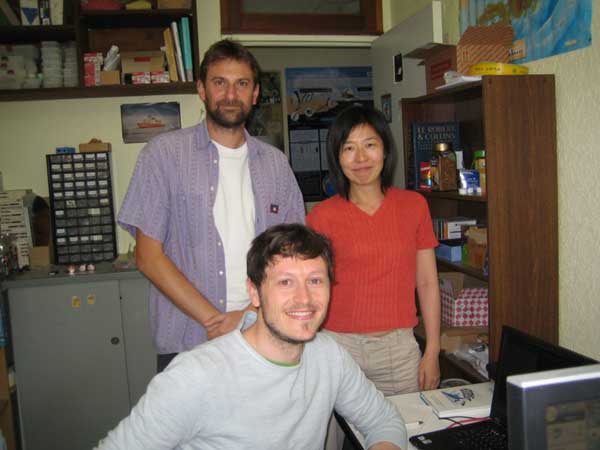English report
AS-HOPE 事業報告
事業番号:AS-23-031
Collaborative research (fractal analysis of penguin diving behavior)
報告者:アンドリュー マッキントッシュ
期間:2011/5/ 7 - 2011/ 5/ 29
My main objective was to establish collaboration with Dr. Ropert-Coudert, a pioneer in applying bio-logging techniques to behavioural-ecological research,and his colleagues/students at the IPHC, CNRS in Strasbourg, to investigate fractal patterns in the diving behavior of penguins, a top marine predator. Myrole in the project is to analyze data collected via bio-logging by Dr. Ropert-Coudert et al. We also aimed to develop a program to investigate the relationship between behavioural complexity, foraging success, stress, and environmental change. Through this joint research, we will tackle prominent problems in ecology, and will disseminate our results in academic journals andconferences. This collaboration has also expanded the close ties between KUPRIand the CNRS in Strasbourg.
During this trip, I spent 3 weeks in the lab of Dr. Ropert-Coudert at the IPHC,CNRS in Strasbourg. Working collectively, Dr. Ropert-Coudert, his close collaborator Dr. A. Kato, a number of his students, and I, identified key questions related to their joint and individual projects using bio-logging to investigate the behavior and ecology of various penguin species. Following these discussions, we made it our future goal to determine the relationship between behavioural complexity (measured via fractal analysis), and various aspects of diving behavior, including: 1) basic biological differences (e.g. age and sex; 2) stress (e.g. attaching logging devices, corticosterone treatment); 3) foraging success; 4) and environmental change. I also gave 2 seminars to researchers involved in the project, the first introducing the theory behind fractal analysis of behavior and the methods used to examine complexity, the second to present preliminary results from my initial analyses.The first phase of this collaboration, which I was able to conduct during the 3weeks in Strasbourg, was to examine sequences of penguin diving behavior usinga set of fractal analytical methods (detrended fluctuation analysis or DFA, anda set of Hurst exponent estimators), all of which attempt to estimate complexity (i.e. fractal dimension) in signals occurring through time, such asbehaviour. All methods converged to the result that diving sequences are complex and exhibit long-range dependence or self-similarity, and suggest sex differences in complexity of diving behavior. I am currently preparing a manuscript of this work for publication in the journal Plos One.

AS-HOPE Project< > >
|







